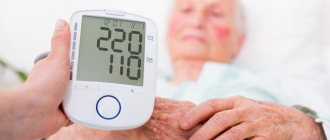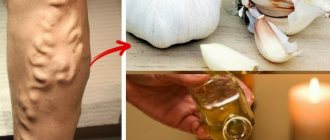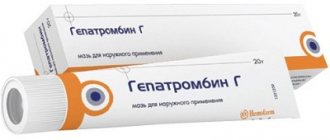Varicose veins are an increase in the size of veins. Any superficial vein can become varicose, but the veins in the legs are most often affected. In an upright position (standing and walking), the pressure in the veins of the lower body increases.
For some, varicose veins and spider veins are simply a cosmetic problem, but for many people, varicose veins can cause heaviness and swelling in the lower extremities. Sometimes varicose veins lead to more serious problems - trophic ulcers.
Treatment may include both measures to prevent the development of chronic venous insufficiency and surgical procedures to remove veins (various techniques).
Read more about the treatment of varicose veins.
Phlebologist, vascular surgeon, angiologist - what are the differences?
An angiologist is a doctor who diagnoses and treats any vascular pathologies, which include lesions of the arterial, venous network, and lymphatic ducts. That is, this is a specialist who conducts conservative therapy of blood vessels throughout the body.
Vascular surgeon: who is he and what does he treat?
A vascular surgeon (angiosurgeon) also deals with the vessels of the entire body and lymph ducts, but performs surgical interventions.
Phlebologist: who is he and what does he treat?
Phlebology is a “narrower” section of angiology. A phlebologist specializes in diseases of the veins of the lower extremities. His competence includes: developing the most effective research methods, making a diagnosis and prescribing treatment for diseases of the veins of the lower extremities. Often, patients are referred to a phlebologist by an angiologist or angiosurgeon if these specialists are not confident in their diagnoses or the correctness of actions. As well as vice versa, a phlebologist can give a referral to an angiosurgeon when a patient needs surgery.
What does a phlebologist treat?
A phlebologist deals with the treatment and prevention of the following pathologies and conditions:
- varicose veins;
- phlebitis;
- phlebothrombosis;
- thrombophlebitis;
- thrombosis;
- disorders caused by blood clots;
- chronic venous insufficiency;
- trophic ulcers;
- venous dysplasia;
- pathology of the pelvic veins;
- bleeding due to varicose veins;
- improper development of veins;
- and etc.
All this applies to the lower extremities.
Find out more about the promotion >>>
When is a consultation with a phlebologist needed?
To exclude serious complications and consequences for future life, you need to urgently consult a doctor if you have a number of symptoms. It is important to remember that in the case of veins of the lower extremities, self-medication not only does not help, but can be dangerous. Only a certified specialist can prescribe adequate treatment.
What symptoms should you contact a phlebologist for:
- night cramps in the calf area;
- rapid fatigue of the legs when walking, feeling very tired at the end of the walk;
- heaviness in the legs;
- swelling of the feet, ankles, calves;
- dilated saphenous veins visible to the naked eye;
- when vessels “shine through” the skin, they can be blue or red;
- spider veins and networks;
- leg pain;
- burning sensation in the legs.
How is an appointment with a phlebologist?
The appointment begins with a conversation between the doctor and the patient. The phlebologist finds out what the person’s complaints are, when the first symptoms appeared, asks about the profession and lifestyle, and the presence of venous diseases in relatives. Other questions may be asked about factors that influence the likelihood of pathology occurring.
Then they move on to inspection. The doctor not only visually assesses the condition of the legs, but also palpates them to determine whether there are dilated vessels or swelling. The specialist may need to examine the abdomen, groin area, and pelvis.
At the first appointment after examination, an ultrasound scan (ultrasound duplex scanning of the vessels of the lower extremities) is performed. This is a non-invasive, absolutely painless and discomfort-free ultrasound examination method. It allows you to “see” the subcutaneous and deep veins, assess the nature of blood circulation and the condition of the venous valves. As a result, a preliminary diagnosis will be made. The doctor can conduct the examination himself or together with an assistant.
If necessary, the patient will be given directions for other tests. So, this can be a coagulogram (test for blood clotting), general and biochemical blood tests, hemostasiogram, etc.
The entire appointment takes approximately 40 minutes.
Based on the research results, future treatment will be discussed. The doctor will answer all the patient's questions.
Prevention of varicose veins
There is no way to completely prevent varicose veins. But improving circulation and muscle tone can reduce the risk of developing varicose veins. Measures to treat discomfort from varicose veins at home:
- Gymnastics
- Maintaining an optimal body mass index
- High fiber, low salt diet
- Avoid high heels, tight hosiery and other tight clothing
- Leg Raising
- Change your sitting or standing position regularly
Well, it's time to move.
Why do you need to do an ultrasound scan at your appointment?
Duplex ultrasound scanning is necessary because only a small part of the saphenous veins is visible to the naked eye. Even an experienced specialist without special hardware examination will not be able to look inside the patient’s body in order to correctly assess the condition of his blood vessels. Carrying out ultrasonography (USDG) at the first appointment is the modern standard for diagnosing varicose veins. Based on the test results, the doctor will understand how much a particular vein is dilated, and will know its exact diameter and the size of the affected area. Taking this into account and the individual characteristics of the patient’s anatomy, effective therapy is selected.
Related diseases and specialists
The course of varicose veins is due to a number of reasons, and its treatment can be directly related to concomitant diseases, which need not only to be diagnosed in time, but also to pay sufficient attention to their elimination.
So, which specialists will help in eliminating the various causes of varicose veins:
- Nutritionist . Contacting a nutritionist is mandatory when a patient rapidly develops varicose veins precisely due to an increase in total body weight. A doctor of this profile will recommend the most suitable diet. A nutritionist can also recommend lifestyle choices that will have a positive impact on your overall health.
- Physical therapy doctor . One of the main recommendations for the treatment of varicose veins is therapeutic and preventive physical education. In order to select the right set of exercises that meets the requirements for varicose veins, as well as concomitant diseases, a physical therapy specialist must collect an anamnesis independently, or rely on the recommendations of colleagues.
- Hematologist . A specialist who deals with blood diseases extremely rarely intervenes in the treatment of varicose veins, however, when thrombophlebitis and varicose veins develop in parallel, contacting a hematologist will not be superfluous. It is he who, in accordance with his specialty, can prescribe anticoagulants depending on the coagulogram data.
- Dermatologist. Depending on the secondary manifestations of varicose veins in the skin area, you may need to consult a dermatologist. The appearance of dermatitis and eczema in advanced varicose veins is not uncommon. Despite the fact that in fact a dermatologist will not be able to cure secondary manifestations without treating the varicose veins themselves, a consultation with him is advisable.
In the video in this article you can find other causes of varicose veins, which also require the intervention of specialists.
Choosing the right doctor is quite simple, it is important to do it on time
Ultrasound scanning: modern technique. Mechanism of operation and diagnostic capabilities
Vascular Doppler ultrasound is a classic ultrasound technique based on the Doppler effect. According to this effect, the frequency and wavelength of radiation, which is perceived by the receiving apparatus, changes due to the movement of either the radiation source or the receiving apparatus itself. In other words, ultrasound equipment picks up impulses that are reflected from red blood cells in the blood. The nature of blood flow is studied by how the frequency and length of ultrasonic waves reflected from them are distorted. The study also allows you to visualize the walls of blood vessels.
Find out more about the promotion >>>
Ultrasound scanning of the lower extremities is one of the most accurate methods for studying the condition of veins and arteries. It allows you to evaluate the performance of blood vessels, their patency, see blood clots, narrowed areas, atherosclerotic plaques, and measure the speed of blood flow. The doctor receives an image of high clarity and contrast, which, coupled with advanced information processing technologies on modern equipment, allows:
- detect atherosclerotic changes up to 1.1 mm in size, with accuracy reaching 98%;
- assess the condition and operation of the valves, the elasticity of blood vessels;
- calculate the size of the blood clot, enlarge its image many times;
- measure the required parameters as accurately as possible, thanks to the automatic quality optimization option;
- track the changes that were achieved during treatment, because the received information about the patient is stored in the computer memory and can be viewed without restrictions;
- detect pathologies at the earliest stages for treatment without consequences.
Ultrasound scanning can detect the following diseases:
- Deep vein thrombosis . The equipment “sees” blood clots attached to the walls of blood vessels, accurately determines their location and assesses the likelihood that they will break off. As a result, complications such as pulmonary artery blockage, stroke and subsequent paralysis and even death can be avoided.
- Atherosclerosis . Atherosclerotic plaques are deposits of calcium and fat on the walls of blood vessels. Without treatment, they grow, which leads to loss of elasticity of the walls of blood vessels, and this disrupts blood flow and leads to hypertension. Ultrasound scanning allows you to see plaques at the very beginning of their formation.
- Postthrombotic syndrome . Ultrasound scanning in this case is necessary for people who have had acute thrombosis of deep veins. Based on the diagnostic results, complete information is obtained about the operation of the venous valves and blood flow.
- Aneurysm . This disease is a protrusion of the vessel wall, which occurs due to its stretching and thinning. The danger lies in the absence of symptoms and the likelihood of aneurysm rupture, which can be fatal. Ultrasound scanning makes it possible to see changes that have just begun in a timely manner.
- Varicose veins Using ultrasound, they determine how dilated and elongated the veins are, whether (and where) there are areas with excessively thin walls and nodes, as well as the stage of the disease. Based on the results, the doctor will prescribe treatment and assess the need for surgery.
The study has no contraindications or restrictions; no preparation is required for it. During the procedure, a contact gel is applied to the skin of the patient’s legs, which increases the permeability of ultrasound signals. Then the specialist moves the sensor over the skin in the areas where the blood vessels are projected. The resulting image is displayed in real time on a computer monitor.
Causes of varicose veins
There are many theories about why varicose veins occur, but the consensus is that defective/damaged valves in the veins are the cause. The valves prevent blood from flowing back inside the vein. They keep blood in the vein, which moves towards the heart. It is not clear what causes the valves to operate less efficiently. Some experts believe that the problem is hereditary. Some people may be born with abnormal vein walls.
Varicose veins can be aggravated by many factors:
- Pregnancy
- Prolonged standing
- Overweight
- Tension: Chronic constipation, urinary retention, chronic cough or any other condition that forces a person to strain for a long period of time causes an increase in the forces transmitted to the veins of the legs. These mechanisms also contribute to the formation of hemorrhoids, which are varicose veins located in the rectal and anal areas.
- Previous surgery or leg injury: These conditions interfere with normal blood flow through the channels.
- Age: In general, most older people experience some degree of varicose veins.









